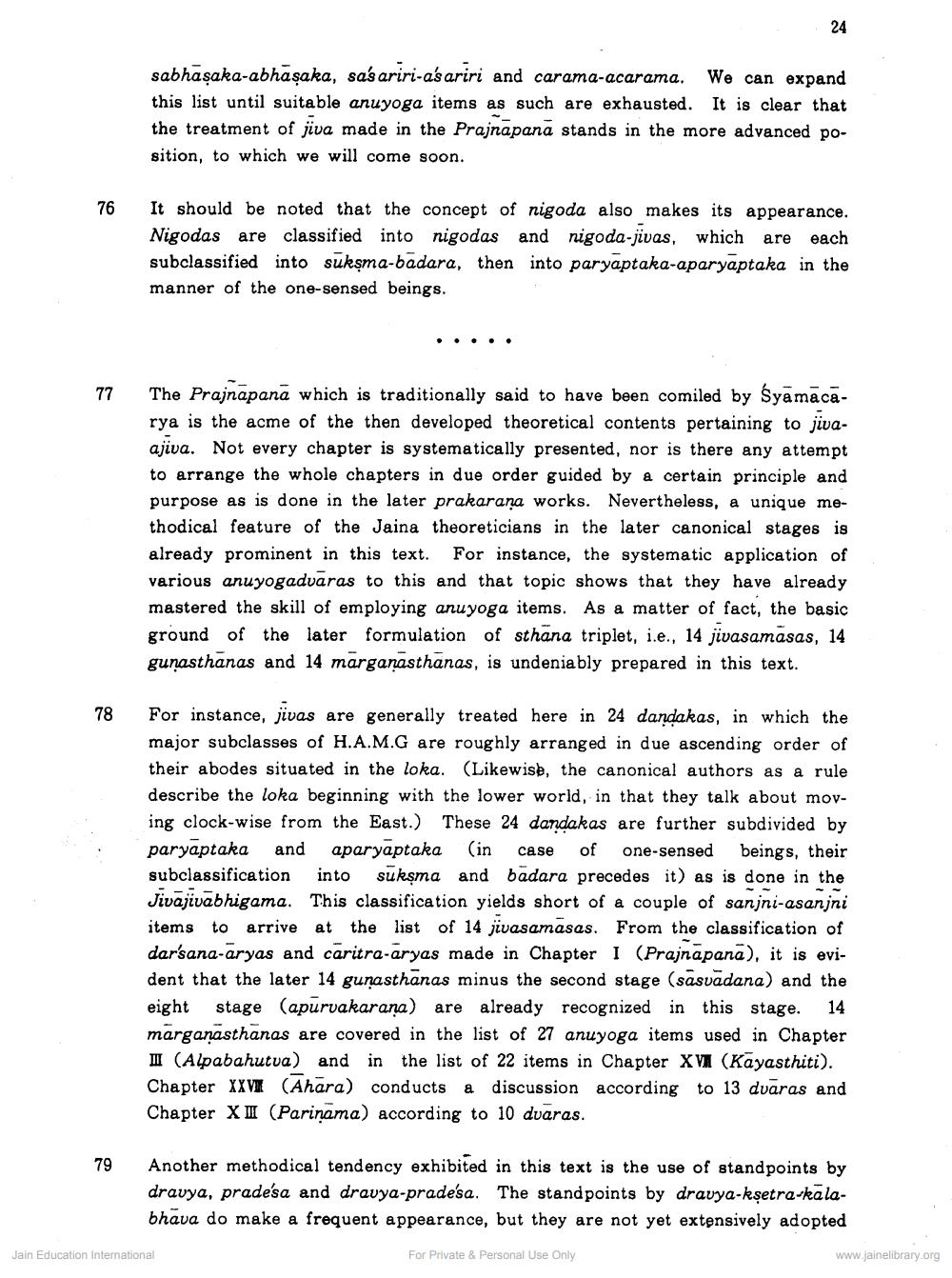________________
24
sabhasaka-abhaşaka, sa's ariri-a's ariri and carama-acarama. We can expand this list until suitable anuyoga items as such are exhausted. It is clear that the treatment of jiva made in the Prajnapana stands in the more advanced position, to which we will come soon.
76
It should be noted that the concept of nigoda also makes its appearance. Nigodas are classified into nigodas and nigoda-jivas, which are each subclassified into sukşma-badara, then into paryaptaka-aparyaptaka in the manner of the one-sensed beings.
77
The Prajnapanā which is traditionally said to have been comiled by Syamacarya is the acme of the then developed theoretical contents pertaining to jivaajiva. Not every chapter is systematically presented, nor is there any attempt to arrange the whole chapters in due order guided by a certain principle and purpose as is done in the later prakarana works. Nevertheless, a unique methodical feature of the Jaina theoreticians in the later canonical stages is already prominent in this text. For instance, the systematic application of various anuyogadvaras to this and that topic shows that they have already mastered the skill of employing anuyoga items. As a matter of fact, the basic ground of the later formulation of sthana triplet, i.e., 14 jivasamāsas, 14 gunasthanas and 14 marganasthanas, is undeniably prepared in this text.
78
For instance, jivas are generally treated here in 24 dandakas, in which the major subclasses of H.A.M.G are roughly arranged in due ascending order of their abodes situated in the loka. (Likewise, the canonical authors as a rule describe the loka beginning with the lower world, in that they talk about moving clock-wise from the East.) These 24 dandakas are further subdivided by paryāptaka and aparyaptaka (in case of one-sensed beings, their subclassification into sukşma and badara precedes it) as is done in the Jivajivabhigama. This classification yields short of a couple of sanjni-asanjni items to arrive at the list of 14 jivasamāsas. From the classification of dar'sana-aryas and caritra-aryas made in Chapter 1 (Prajnapana), it is evident that the later 14 gunasthānas minus the second stage (sāsvādana) and the eight stage (apurvakarana) are already recognized in this stage. 14 marganasthanas are covered in the list of 27 anuyoga items used in Chapter II (Alpabahutua) and in the list of 22 items in Chapter XV (Kayasthiti). Chapter XXVI (Ahara) conducts a discussion according to 13 dvaras and Chapter XI (Parinama) according to 10 dvaras.
Another methodical tendency exhibited in this text is the use of standpoints by dravya, prade'sa and dravya-pradesa. The standpoints by dravya-kşetra-kalabhava do make a frequent appearance, but they are not yet extensively adopted
Jain Education International
For Private & Personal Use Only
www.jainelibrary.org




